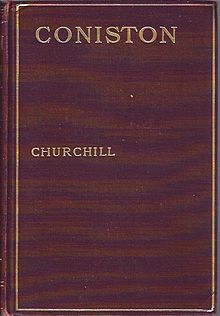
Cornish is a town in Sullivan County, New Hampshire, United States. The population was 1,616 at the 2020 census. Cornish has four covered bridges. Each August, it is home to the Cornish Fair.
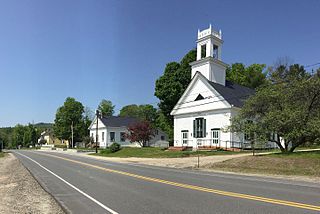
Croydon is a town in Sullivan County, New Hampshire, United States. The population was 801 at the 2020 census.

Coniston Water in the English county of Cumbria is the third-largest lake in the Lake District by volume, and the fifth-largest by area. It is five miles long by half a mile wide, has a maximum depth of 184 feet (56 m), and covers an area of 1.89 square miles (4.9 km2). The lake has an elevation of 143 feet (44 m) above sea level. It drains to the sea via the River Crake.
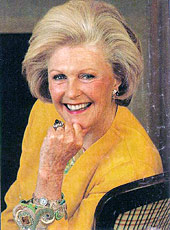
Pamela Beryl Harriman, also known as Pamela Churchill Harriman, was an English-born American political activist for the Democratic Party, diplomat, and socialite. She married three times, her first husband was Randolph Churchill, the son of prime minister Winston Churchill, Her third husband was W. Averell Harriman, an American diplomat who also served as Governor of New York. Her only child, Winston Churchill, was named after his famous grandfather. She served as US ambassador to France from 1993 to 1997.

Winston Churchill was an American best-selling novelist of the early 20th century.
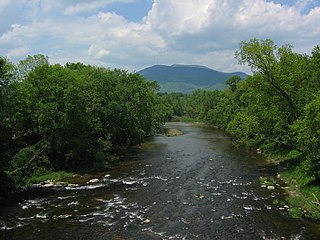
The Sugar River is a 27.0-mile-long (43.5 km) river located in western New Hampshire in the United States. It is a tributary of the Connecticut River, which flows to Long Island Sound.

Florence Scovel Shinn was an American artist and book illustrator who became a New Thought spiritual teacher and metaphysical writer in her middle years.

A Far Country is a novel by American writer Winston Churchill published in 1915.

Winston Churchill, in addition to his careers of soldier and politician, was a prolific writer under the pen name 'Winston S. Churchill'. After being commissioned into the 4th Queen's Own Hussars in 1895, Churchill gained permission to observe the Cuban War of Independence, and sent war reports to The Daily Graphic. He continued his war journalism in British India, at the Siege of Malakand, then in the Sudan during the Mahdist War and in southern Africa during the Second Boer War.
The Game of Life and How to Play It, published in 1925, teaches the philosophies of its author, Florence Scovel Shinn. The book holds that ignorance of, or carelessness with the application of various 'Laws of Metaphysics' can bring about undesirable life events.

The Cornish Art Colony was a popular art colony centered in Cornish, New Hampshire from about 1895 through the years of World War I. Attracted by the natural beauty of the area, about 100 artists, sculptors, writers, designers, and politicians lived there either full-time or during the summer months. With views across the Connecticut River Valley to Mount Ascutney in Vermont, the bucolic scenery was considered to resemble that of an Italian landscape.
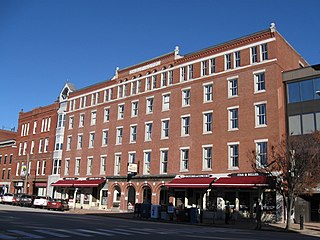
The Eagle Hotel is a historic hotel building at 110 North Main Street in Concord, New Hampshire. Built in 1851, it has been a prominent local landmark since then, and a meeting place for state politicians, given its location across the street from the New Hampshire State House. The building was listed on the National Register of Historic Places in 1978.

Rose Standish Nichols (1872–1960) was an American landscape architect from Boston, Massachusetts. Nichols worked for some 70 clients in the United States and abroad. Collaborators included David Adler, Mac Griswold, Howard Van Doren Shaw, and others. She also wrote articles about gardens for popular magazines such as House Beautiful and House & Garden, and published three books about European gardens.

Harlakenden, located in Cornish, New Hampshire, was the residence of American novelist Winston Churchill, and was also the Summer White House of Woodrow Wilson from 1913 until 1915. It was destroyed by fire on October 6, 1923.
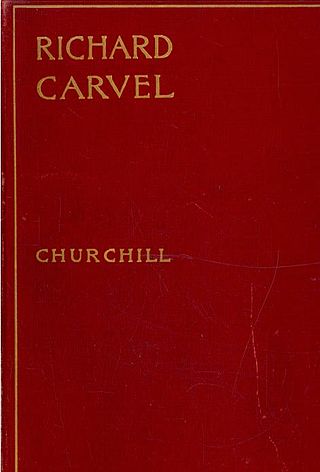
Richard Carvel is a historical novel by the American novelist Winston Churchill. It was first published in 1899 and was exceptionally successful, selling around two million copies and making the author a rich man. The novel takes the form of the memoirs of an eighteenth-century gentleman, the Richard Carvel of the title, and runs to eight volumes. It is set partly in Maryland and partly in London, England, during the American revolutionary era
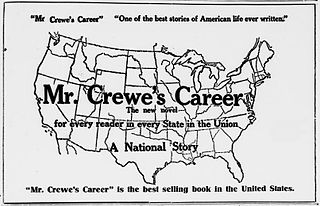
Mr. Crewe's Career is a 1908 best-selling novel by American writer Winston Churchill.
The Crossing is a 1904 best-selling novel by American writer Winston Churchill. It was the best-selling novel in the United States in 1904, and includes illustrations by Sydney Adamson and Lilian Bayliss. A portion of the book first appeared in December 1903 in Collier's under the title The Borderland.

A Modern Chronicle is a 1910 best-selling novel by American writer Winston Churchill.
The Inside of the Cup is a 1913 best-selling novel by American writer Winston Churchill. The story was first serialized in Hearst's Magazine from April 1912 through July 1913, and was released in book form in May 1913. The best-selling book in the United States for 1913, it sparked a nationwide debate about the role of Christianity in modern life.
